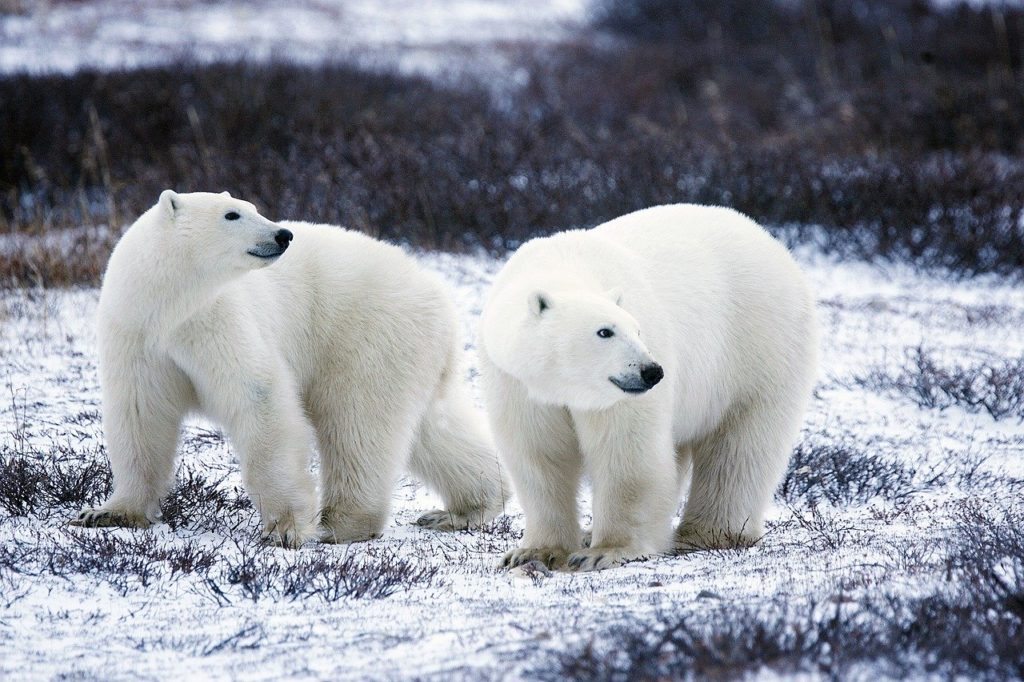Since its inception in 1971, Earthjustice has supplied legal representation to organizations fighting for environmental justice in court. Possessing 15 regional offices, over 130 attorneys, and hundreds of active legal proceedings, Earthjustice lends an eloquent voice and experienced hand to the task of protecting the planet’s fragile ecosystems and the wildlife—and humans—that depend on them.

In many cases on which its team consults or serves as the lead counsel, Earthjustice seeks to hold government authorities accountable for upholding the provisions of historic pieces of legislation that have improved life on Earth for generations.
The Endangered Species Act (ESA), which was passed in 1973, is one such landmark law that is viewed by a wide range of experts as among the most effective pieces of federal legislation ever created. The fulfillment of its provisions has led to the preservation of fully 99 percent of the species that it has sought to safeguard over the course of more than 40 years.
But the Trump administration has chosen to side with corporate interests that present serious threats to the environment and that now threaten the continued effectiveness of the ESA itself. This is despite the Act’s overwhelming popularity among the American public. One recent survey showed that fully nine-tenths of respondents support the ESA, an impressive achievement given the contemporary political divide.
Here is a summary of what you need to know.
A race against time
In 2019, Earthjustice, which represents a wide range of environmental organizations that include the Center for Biological Diversity and the Humane Society of the United States, filed suit against the Trump administration, citing newly introduced changes in the interpretation of the ESA that critically weaken the Act’s power. The Trump team’s new guidelines threaten the continued survival of hundreds of different species and represent an enormous step backward in terms of preserving entire ecosystems.

Estimates show that more than 200 species would have become extinct between the time of the ESA’s passage and the year 2005 were it not for the enforcement of its provisions.
And the ESA is needed now more than ever. Scientists believe that due to the increased pace of climate change, the earth is losing biodiversity at an alarming rate. Many species may disappear before they—and their value to larger ecosystems—are even discovered.
A remarkable track record of conservation
Due to the enforcement of the ESA over the past four decades, the bald eagle, the grey wolf, the Florida manatee, the grizzly bear, and many other species have returned from the brink of extinction. Although some of these rescued species continue to face threats to their continued ability to thrive, we are no longer in immediate danger of losing them.
A major impetus for the passage of the ESA was the plight of the bald eagle. This symbol of national pride saw its numbers plummet by the 1960s, due in large part to the widespread use of DDT, a toxic pesticide. Hunting and human encroachment into habitats that supported the bald eagle also contributed to the problem. So, in 1966, Congress passed the Endangered Species Preservation Act, a law that later expanded its mandate into the ESA in 1973.
Part of the reason for the ESA’s success is that it mandates that the government deliver a strategic plan for species recovery. This structured, focused approach has led to numerous instances of species restoration throughout the country.
Ripples throughout an ecosystem
One reason why the ESA remains of great importance is that the restoration of one species affects not only that individual species, but its larger region. The preservation of any one type of animal or plant contributes to the ongoing viability of the flora and fauna of its entire interwoven ecosystem.
Experts point to the grey wolf as an important example. After the species was restored in Yellowstone National Park, it helped to keep the park’s elk population under control. When elk were unnaturally abundant due to the absence of grey wolves as predators, aspen and willow trees were overeaten.

The foliage of these trees serves as a cooling mechanism for the streams that flow beneath them. What this means is that when aspen and willow are abundant in the ecosystem, the cooler streams are able to support stronger trout populations. In addition, this cooler environment is better able to sustain havens for migrating flocks of birds and a greater abundance of food for local beavers. When beavers build dams, those dams in turn help to sustain the types of marshland that support species like ducks and otters.
A threat and a promise
While federal legislators have, over the years, introduced a number of bills that are designed to weaken the powers of the ESA, the Trump administration’s recent efforts in this regard are particularly ominous. These changes to how the ESA is interpreted are of great concern to Earthjustice and its clients.
On August 12, 2019, the United States Fish and Wildlife Service and the U. S. National Marine Fisheries Service—the two agencies charged with handling the bulk of the tasks associated with ESA enforcement—finalized a set of sweeping rollbacks to the Act’s protections. Experts say that these changes will weaken existing safeguards for threatened species and permit federal government officials to decide whether or not they are willing to protect a species based on economic calculations.
A spokesperson for the Center for Biological Diversity stated that these changes skew the balance of the issue toward the side of corporations and developers, and that they are poised to dismantle the past four decades of the gains made under the ESA.
One of the most significant of these changes is the Trump team’s rollback of blanket protections that aid threatened flora and fauna—those at risk of becoming endangered, although not considered to be in the more serious “endangered.” category. In the past, the ESA’s safeguards have kicked in whenever a species was deemed to be “threatened” in order to prevent it from becoming endangered. Now, under the Trump administration, that foresight is gone, as threatened species are made vulnerable to being hunted and killed again to near-extinction.
In crafting its new guidelines, the Trump administration also removed wording in the ESA’s provisions that specifically prohibited officials from considering the economic ramifications of placing a species on a “threatened” or “endangered” list. However, officials are still told to seek out the best available scientific advice when deciding if a species merits “threatened” or “endangered” status, although they are no longer required to consider the effects of climate change on the species in question.
The Trump administration also weakened the requirement that officials consult established scientists and experts in wildlife management when deciding whether to issue a permit for resource extraction enterprises such as oil and natural gas drilling or logging.

